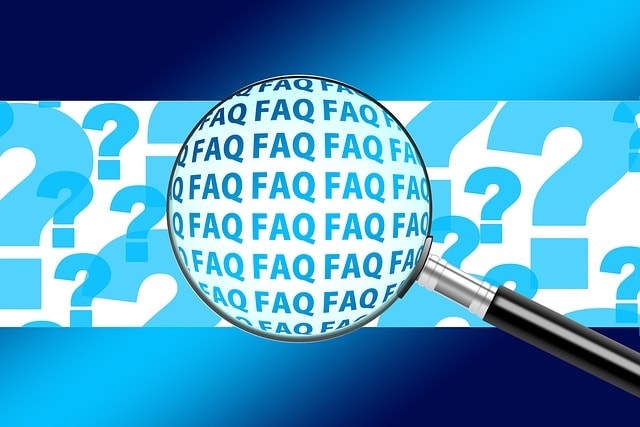What is a Business Pricing Strategy?
A business pricing strategy is a plan that helps companies decide how much to charge for their products or services. This plan affects sales, profits, and customer satisfaction. Different methods exist for setting prices, each with its own advantages and challenges.
Pricing strategies play a crucial role in small businesses’ success. Determining the right pricing strategy is essential for generating revenue, attracting customers, and remaining competitive in the market. A well-thought-out pricing strategy can help small businesses maximize profits while meeting their target market’s needs and expectations.
Small businesses often have limited resources, so setting the right price is critical for ensuring profitability and sustainability. Pricing strategies can also help small businesses differentiate themselves from competitors and create a unique value proposition for customers. By carefully analyzing market trends, customer behavior, and competitors’ pricing strategies, small businesses can develop a competitive pricing strategy that aligns with their business goals and objectives.
Moreover, pricing strategies can also impact customer perception and brand positioning. Small businesses need to consider factors such as perceived value, price sensitivity, and pricing structures to effectively communicate the value of their products or services to customers. Small businesses can build customer loyalty and drive repeat business by implementing pricing strategies that resonate with their target market.
Pricing strategies are integral to small business operations and can significantly impact overall success. By understanding their role and implementing them effectively, small businesses can achieve their financial goals and sustain long-term growth in a competitive marketplace.
What are the different types of Pricing Strategies?
Here are some of the most common pricing strategies to consider.
Cost-Plus Pricing
Cost-plus pricing is simple. Businesses add a fixed percentage to the cost of producing a product. For example, if an item costs $10 to make, and the company adds a 20% markup, the price becomes $12. This method ensures all costs are covered.
Value-Based Pricing
Value-based pricing focuses on how much customers believe a product is worth. Companies set prices based on perceived value rather than costs. For instance, a smartphone with advanced features may sell for more because people see it as valuable.
Skimming Pricing
Skimming pricing involves setting high initial prices for new products. Over time, prices drop to attract more buyers. This strategy works well for tech gadgets or innovative items. It helps recover development costs quickly.
Competition-Based Pricing
Competition-based pricing sets prices based on competitors’ rates. Businesses analyze what others charge and adjust their prices accordingly. This approach helps maintain market share while staying competitive.
Dynamic Pricing
Dynamic pricing changes based on demand and supply. Prices can fluctuate throughout the day or week. Airlines often use this model, charging more for last-minute flights. This strategy maximizes profits during peak times.
Penetration Pricing
Penetration pricing starts with low prices to attract customers quickly. Once a customer base is established, prices may increase gradually. This approach works well in crowded markets where gaining attention is crucial.
High-Low Pricing
High-low pricing combines high regular prices with frequent sales. Retailers often use this strategy to create excitement around discounts so customers feel they get deals even when original prices are high.
Psychological Pricing
Psychological pricing uses tactics to influence buyer behavior. For example, setting a price at $9.99 instead of $10 makes it seem cheaper. This small change can lead to increased sales by attracting budget-conscious shoppers.
Premium Pricing
Premium pricing sets higher prices to signal quality and exclusivity. Luxury brands often use this strategy to attract affluent customers. People associate higher prices with better products, which can boost brand reputation.
Bundle Pricing
Bundle pricing offers multiple products together at a lower rate than buying separately. This strategy encourages customers to buy more items at once. Fast food restaurants often use this approach for meals and drinks.
Why is it essential to choose a Pricing Strategy?
Choosing a pricing strategy is crucial for any business. It helps define how a company positions itself in the market. A transparent pricing objective guides decisions on how much to charge for products or services. This decision affects sales, profits, and customer perceptions.
A well-thought-out pricing strategy can help attract customers and highlight a product or service’s value proposition. For example, a business offering high-quality items might set higher prices to reflect that quality. Customers often associate higher prices with better quality, thus enhancing brand image.
Different strategies serve different purposes. Some businesses use penetration pricing to enter new markets. They set lower prices to attract customers quickly. Others may adopt skimming pricing. This involves starting with high prices and lowering them over time. Each method has its benefits and drawbacks.
Understanding the essential need for a pricing strategy also involves knowing the costs. Businesses must cover expenses like production and marketing while making a profit. If prices are too low, they risk losing money. If they are too high, customers may turn away.
Pricing strategies can also impact competition. A well-planned approach allows businesses to stand out among rivals. For instance, bundling products can create unique offers that appeal to buyers. Customers often find bundled deals attractive because they perceive added value.
Businesses should consider their target audience when setting prices. Knowing what customers are willing to pay is crucial to success. Market research can provide insights into customer preferences and behaviors, which helps create effective pricing objectives.
Businesses must also adapt their pricing strategies over time. Market conditions change frequently due to various factors, such as trends or economic shifts. Companies that stay flexible can adjust quickly and maintain competitiveness.
For example, during economic downturns, consumers may tighten their budgets. In such cases, businesses might need to reconsider pricing tactics to keep customers engaged.
Selecting a pricing strategy is not just about numbers. It involves understanding the market, costs, and customer expectations. A good strategy supports overall business goals and drives growth.
What factors influence Pricing Strategies?
Pricing decisions are not made in a vacuum. Many factors affect how businesses set their prices. Understanding these can help companies develop effective pricing strategies.
Competitor Pricing
Competitor prices play a significant role in setting your own prices. Businesses often look at what similar companies charge for their products or services. If competitors offer lower prices, you may need to adjust yours. This helps stay competitive and attract customers. However, simply matching competitor prices may not be the best approach.
Market Conditions
Market conditions also impact pricing strategies. Economic changes can lead to fluctuations in demand. For example, people may spend less during a recession. This means companies might need to lower their prices to encourage sales. On the other hand, if the economy is doing well, businesses can raise their prices as customers are willing to spend more.
Cost of Goods
Cost is another critical factor in pricing decisions. Businesses must cover their costs to make a profit. This includes the cost of materials, production, and overhead expenses. If service costs rise, companies might have to increase their prices to maintain profit margins. Keeping track of all these costs helps ensure that pricing remains profitable.
Customer Demand
Customer demand directly affects pricing strategies. When demand increases, businesses can raise their prices. For example, people often buy more products during holidays or special events. Companies take advantage of this by setting higher prices during peak times. Conversely, low demand may require price reductions to stimulate sales.
Perceived Value
Perceived value is how customers view the worth of a product or service. If customers believe a product has high value, they may pay more for it. Marketing plays a crucial role in shaping this perception. Companies often highlight unique features or benefits to justify higher prices. Understanding what customers value helps in setting appropriate prices.
Labor
Labor costs should not be overlooked in pricing strategies. The cost of employees directly impacts overall expenses. If wages increase, businesses might need to adjust prices accordingly. This ensures that all expenses are covered while maintaining quality service.
What are the benefits of a Good Pricing Strategy?
A good pricing strategy can bring many advantages to a business. First, it helps to attract customers. Setting the correct prices makes products appealing. Customers often look for value. They want quality goods at fair prices. A well-planned price can grab their attention.
Effective pricing strategies also improve sales. People buy more when prices match customer expectations, leading to higher revenues. Businesses can then reinvest in their products and services, helping them grow over time.
Customer retention is another benefit. Satisfied customers return for more purchases. If they feel they get good value, they stay loyal. Loyalty programs can also be tied to pricing strategies. Offering discounts or rewards encourages repeat business, creating a strong customer base.
A perfect pricing strategy also considers marketing costs. Businesses need to cover expenses while still making a profit. By analyzing costs, companies can set prices that ensure profitability. This balance is crucial for success.
Setting successful price points also allows businesses to compete effectively. In crowded markets, standing out is essential. Competitive pricing attracts new customers away from competitors, giving an edge in gaining market share.
An optimal price reflects the quality of goods and services offered. A premium price can signal high quality. Customers often associate higher prices with better products. This perception can lead to increased brand loyalty. People are willing to pay more if they believe they are getting superior value.
Conversely, low pricing can attract budget-conscious consumers and allow businesses to reach different market segments. However, it’s essential not to compromise on quality while lowering prices. Maintaining standards builds trust with customers.
Timing also plays a role in pricing strategies. Seasonal changes affect demand and supply. Adjusting prices during peak seasons can maximize profits. For instance, holiday sales often see price reductions to boost purchases.
Businesses should also regularly evaluate their pricing strategies. Market trends and consumer preferences change over time, and adapting to these changes keeps the business relevant and competitive.
What are the limitations of Pricing Strategies?
Pricing strategies can have significant limitations. Poor pricing strategies can lead to low sales and unhappy customers. If a business sets prices too high, it may lose potential buyers. If prices are too low, it can hurt profits. Finding the right balance is crucial.
An ineffective pricing strategy can also affect a company’s goals. Businesses often aim for specific cash flow targets. When prices don’t align with these goals, companies struggle to meet their expectations. For example, if a travel company prices its packages too low, it might not cover its overhead costs, leading to financial losses over time.
Costs play a significant role in pricing. Companies must consider production expenses and operational costs. If these are too high, businesses must raise prices to stay afloat. However, this might scare away customers who expect lower prices. Thus, there is a constant need to balance costs and customer expectations.
Another limitation is the impact of market competition. Businesses must monitor how competitors price similar products. If they set prices significantly higher, they risk losing customers. On the other hand, underpricing could suggest poor quality or lack of value. Understanding one’s product’s worth in the marketplace is essential for companies.
Luxury products also face unique challenges. Customers often associate high prices with the quality of luxury items. Setting prices too low can damage brand perception. Customers may think that lower-priced luxury items are inferior, harming long-term brand loyalty and reputation.
Timing also affects pricing strategies. Seasonal changes can influence how products sell. For instance, travel companies often adjust prices based on holiday seasons or peak travel times. Not adapting pricing during these times can lead to lost sales opportunities.
Businesses must consider the range of products offered. A diverse product line requires different pricing strategies for each item. If one product is priced poorly, it can affect the entire brand image and sales of related products.
Pricing Strategy Pros & Cons
Pros:
- Helps businesses maximize profits.
- Can attract different customer segments.
- Provides flexibility in adjusting prices based on market conditions.
- Can create a competitive advantage.
Cons:
- May lead to price wars with competitors.
- Could alienate certain customer segments with high prices.
- Complex pricing strategies may be difficult to implement and manage.
- Constantly changing prices may confuse customers.
How do I pick the right Pricing Strategy for my Business?
Choosing the best pricing strategy for your business can be a delicate balancing act. Pricing strategies can vary significantly between industries and markets. Additionally, small businesses often have to use creative pricing strategies, or a combination of strategies, to compete with larger firms.
Here are some key considerations when choosing a pricing strategy for your small business.
Understand Goals
Start by defining your business goals. What do you want to achieve? Goals can include increasing sales, gaining market share, or maximizing profits. Set clear objectives. For example, if you aim to attract more customers, a lower price might help. If you aim to highlight quality, a higher price could be better.
Analyze Costs
Next, analyze your costs. Know how much it takes to produce your product or service, including materials, labor, and overhead costs. Calculate the total cost per item. This helps in setting a minimum price. You can’t sell below this amount without losing money.
Research Competitors
Look at what competitors charge for similar products. This gives insight into market rates. Identify whether you want to match their prices or set yours lower or higher. Understanding competitor pricing helps position your brand effectively in the market.
Identify Target Customers
Know who your target customers are. Different groups have different price sensitivities. Younger consumers might prefer lower prices, while older consumers may value quality over cost. Tailor your strategy based on customer preferences.
Choose Pricing Model
When choosing a pricing model for your business, it’s crucial to consider various factors, such as your target market, competition, and the value of your product or service. Different pricing models, such as cost-plus, value-based, or subscription-based, can impact your bottom line and overall profitability.
For example, if you are in a highly competitive market, a value-based pricing model might be more suitable to differentiate your offering and capture the perceived value from customers. On the other hand, a subscription-based model can provide a more predictable revenue stream and encourage customer loyalty. Ultimately, your chosen pricing model should align with your business goals and customer needs to ensure long-term success.
Test Strategies
After choosing a strategy, test it in the market. Gather feedback from customers about pricing perceptions. Based on their responses, make adjustments as needed. Testing helps refine your approach before fully committing.
Monitor Results
Finally, monitor the results of your pricing strategy regularly. Use sales data to see if it meets your goals. Adjustments may be necessary as market conditions change. Staying flexible allows you to adapt quickly to new challenges.
Frequently Asked Questions
Here are the most common questions about building a good pricing strategy.
Can Pricing Strategies change over time?
Yes, pricing strategies should evolve with market conditions, customer preferences, and business objectives. Regular analysis ensures your strategy remains relevant and effective.
Businesses may change their pricing strategy when faced with increased competition in the market. For example, suppose a new competitor enters the industry offering similar products at a lower price point. In that case, a business may need to adjust its pricing strategy to remain competitive and retain customers.
Additionally, changes in customer preferences can prompt a business to reevaluate its pricing strategy. For instance, if customers start valuing convenience and service over price, a company may need to adjust its pricing to reflect the added value it provides.
Furthermore, businesses may change their pricing strategy to align with their objectives. If a company aims to increase market share quickly, it may initially implement a penetration pricing strategy to attract customers with lower prices. On the other hand, if a business is focused on maximizing profits, it may opt for a premium pricing strategy to position itself as a high-end brand in the market.
How often should I review my Pricing Strategy?
Review your pricing strategy at least annually or when significant changes in costs, competition, or market conditions occur. Regular assessments ensure your strategy stays aligned with business goals.
Are there risks associated with changing my Pricing Strategy?
Yes, changing your pricing strategy can lead to customer confusion or loss of loyalty. Clear communication and gradual adjustments can mitigate these risks while maximizing benefits.
What is the impact of pricing on customer perception?
Pricing significantly influences how customers perceive value. Competitive pricing can attract buyers, while premium pricing may suggest higher quality. Aligning price with perceived value is crucial for success.
How do I conduct a Pricing Analysis?
Conducting a pricing analysis is essential in setting prices for your products. This process helps you understand how much customers are willing to pay and what competitors charge.
Start by gathering pricing information from various sources. Then, look at similar products in the market and check their selling prices and features.
Next, analyze your costs. Determine the cost price of your product. Include expenses like materials, labor, and overhead. This gives you a clear picture of how much you need to charge to cover expenses and make a profit.
Consider different pricing strategies as well. For example, skimming involves setting a high price initially and lowering it over time. This can work if you have a unique product or service. Alternatively, you might choose penetration pricing. This means starting with a low price to attract customers quickly.
Create a list of your competitors. Research their prices and any promotions they offer. This helps you see where your product fits in the price range. You want to ensure that your price is competitive without undervaluing your work.
Use surveys or focus groups to gather feedback on your pricing. Ask potential customers what they would be willing to pay for your product. This can provide valuable insights into the right minimum price for your offering.
Look at external factors, too. Economic conditions can affect consumer spending habits. Customers may be less willing to spend money on non-essential items during tough times. Adjust your pricing accordingly to maintain sales during these periods.
Analyze cash flow projections as well. Understanding how much revenue you expect can help determine if your pricing is sustainable long-term. Ensure your selling price covers costs while generating enough profit to support growth.
After gathering all this data, create a pricing model that reflects your findings. Document everything clearly so you can refer back to it later when needed.
Do Pricing Strategies differ between industries?
Pricing strategies can vary significantly between industries. Each industry has unique characteristics that influence how businesses set their prices. For example, the technology sector often uses a penetration pricing strategy. This means it starts with lower prices to attract customers and gain market share quickly.
Utilities, like water and electricity providers, operate differently. They usually have regulated prices, which governments often control to ensure fairness and accessibility for all consumers. This creates a stable pricing environment, unlike more competitive industries.
Retail is another industry with its own approach. Retailers often use discount pricing. They may offer sales and promotions to entice customers. This strategy helps clear old inventory and attracts price-sensitive customers. In contrast, luxury brands focus on premium pricing. They set high prices to create an image of exclusivity and quality.
The service industry also has distinct pricing strategies. For instance, restaurants commonly use value-based pricing. They determine prices based on what customers believe the meal is worth rather than just costs. If customers perceive good value, this can lead to higher profits.
Understanding your industry’s most common pricing strategies can help you determine the best one to use. Conduct thorough market research and look into competitor pricing to help determine the proper strategy for your sector.
How can my Business use a Pricing Strategy to create a Good Profit Margin?
Businesses can use a pricing strategy to boost their profit margin. A good profit margin means more money stays with the company after expenses. Companies need to understand their costs and set prices wisely to achieve this.
First, businesses must calculate their production costs, which include materials, labor, and overhead. Knowing these costs helps in setting a price that covers expenses. For example, if it costs $10 to make a product, it should be higher than $10. If the business sets the price at $15, the profit is $5 per item sold.
Next, companies should consider markup. Markup is the difference between a product’s cost and its selling price. A common approach is to use a percentage for markup. For instance, if a business wants a 50% markup on a $10 product, it would sell it for $15. This simple calculation can help maintain a healthy profit margin.
Another method is to analyze competitors’ prices. Understanding what others charge helps businesses position themselves in the market. If many competitors sell similar products for around $20, pricing below that can attract new customers. However, pricing too low may hurt profits. Companies must find a balance between attracting buyers and maintaining profitability.
Creating value is also essential for increasing profit margins. Businesses can do this by improving product quality or offering unique features. Customers are often willing to pay more for products they see as valuable. For example, an organic skincare brand might charge more because customers believe in its quality and benefits.
A pricing strategy should also include discounts and promotions. These can encourage sales and attract new customers. However, businesses must ensure that discounts do not cut too deeply into profits. Setting clear limits on discounts helps protect profit margins while still enticing buyers.
Training employees about pricing strategies is crucial, too. Employees who understand how pricing works can better communicate value to customers. They can explain why certain products have higher prices based on quality or features.
Finally, businesses should regularly review their pricing strategy. Markets change quickly, and so do customer preferences. A company may need to adjust prices based on new products or changes in production costs.
Building a Good Pricing Strategy – Final Thoughts
Building a good pricing strategy is crucial for your business’s success. You’ve learned about different pricing strategies, their benefits, and how to choose the right one. Understanding the factors that influence pricing helps you make informed decisions.
Analyze your market and competitors to find the best fit for your business. Experiment with strategies and adjust as needed. A solid pricing strategy can boost your profit margins and enhance customer trust.
Contact us if you have more questions about pricing or to apply for a small business loan. Our alternative funding experts can help you find the best financing options for your business needs.























